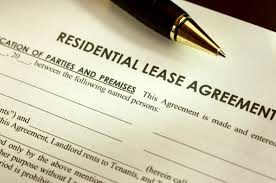Properly removing your name off a lease can be an afterthought for some tenants who prefer to simply work out the new living arrangements amongst themselves. But not properly following the correct process can come back to bite in a bad way, for both those staying and leaving.
The process to transfer out of a lease is quite simple. If a tenant is exiting a lease half way through the contract, all they need to do is sign a tenancy transfer form. This will likely have a different name in each state (for example, in Queensland, tenants need to sign a Change of Shared Tenancy form and Change of Shared Bond form)
Once these forms are signed by all parties, the tenant can be removed from the lease. Any replacement tenants (if applicable) can then be added to the lease. Your Property Manager will be able to explain the process and assist them with this. All pretty straight forward.
Not following these correct processes can cause big problems not just for the tenant leaving, but also the tenants remaining.
For example, for the tenants remaining, not properly transferring the lease to another tenant can make getting their bond back more difficult.
When the remaining tenants come to the end of their lease, they will need all signatories on the original bond lodgement form to retrieve their bond. If the exiting tenant is not available, getting the bond back becomes far more complicated than it would ever need to be.
Perhaps the exiting tenant has relocated interstate, or went travelling overseas and isn’t able to sign the bond claim form. Perhaps they have simply changed their phone number and are unable to be contacted. This will make getting the bond back more frustrating for the tenants remaining, all of which could be avoided by properly following procedure. 
The tenant leaving can also find themselves in serious trouble if they are still linked to a lease. If the remaining tenants default on their rent, the credit ratings of all the tenants signed on the lease may put be in jeopardy.
Agents do have the ability to record any defaults on rental payments with tenancy default databases, meaning anyone on the lease can potentially be refused loan applications later on. For example, if a tenant doesn’t correctly transfer out of a lease when they leave, and their former housemates default on their rent, all signatories on the original lease could be exposed to a negative credit rating.
Even though the exiting tenant does not pay rent at the property, as long as their signature is still on the lease they will be held responsible.
Again, all that trouble could be avoided if the tenant had properly transferred out of the lease.
For further information on Change of Tenancy procedures, speak to your property manager.
